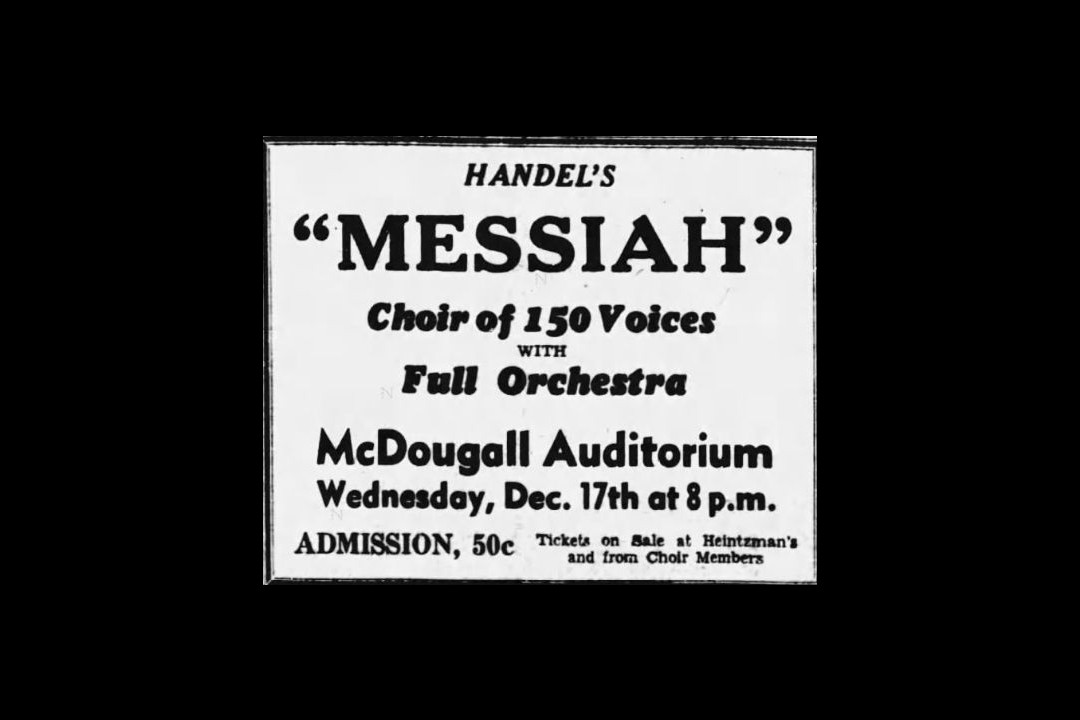On this day in 1941, a Christmas choir rang out in an auditorium named for one of Edmonton's earliest residents.
George McDougall first arrived in Fort Edmonton in 1871. By then, McDougall had already spent much time in the Prairies. He was born in Ontario, ordained as a Methodist minister in 1854, and tasked with establishing ministries across what would become the Prairie provinces. That role took him first to what would become Manitoba, then to what would become Saskatchewan, and eventually to what would become Alberta.
In 1863, McDougall established the Victoria settlement near present-day Smoky Lake. At some point, his wife Elizabeth and son John (not to be confused with the other John McDougall, a businessman and future Edmonton mayor) joined him.
In 1871, McDougall received a new task from his church: to establish a mission outside Fort Edmonton. The family arrived in the summer and began building a small home and church at the top of a hill overlooking the river valley. It was a modest two-storey structure, but one that gained significant importance in the history of Edmonton. The house and church are likely the first permanent structure built by a settler outside the fort's walls.
After building his mission, McDougall wasn't one to stay in one spot. He frequently travelled to what's today southern Alberta, where he played a part in negotiating the Treaty 6 and Treaty 7 agreements between the federal government and Indigenous nations. In 1875, he and his son founded an orphanage and residential school near Morley.
Before McDougall arrived in Edmonton, he was also responsible for the theft of Manitou Asinîy, a meteorite that fell near Hardisty and served as a sacred spiritual site for many Indigenous people. This spiritual significance led McDougall to dig up the stone and remove it from where it had rested for untold years. Given the spiritual importance of the stone, McDougall hoped that taking it to his mission would encourage Indigenous people to embrace Christianity.
McDougall left a considerable mark on Edmonton's history, but he didn't live in the area long. Five years after he arrived, McDougall died during a blizzard while hunting near Calgary.
While McDougall Auditorium is no longer, his name can still be seen across the city and the province — the original church he built was moved to Fort Edmonton Park, with McDougall United Church now on the land. Other parts of his legacy are being unwound: While the Manitou Asinîy is currently housed at the Royal Alberta Museum, plans are underway to repatriate it to its original location.
This clipping was found on Vintage Edmonton, a daily look at Edmonton's history from armchair archivist @revRecluse of @VintageEdmonton.

